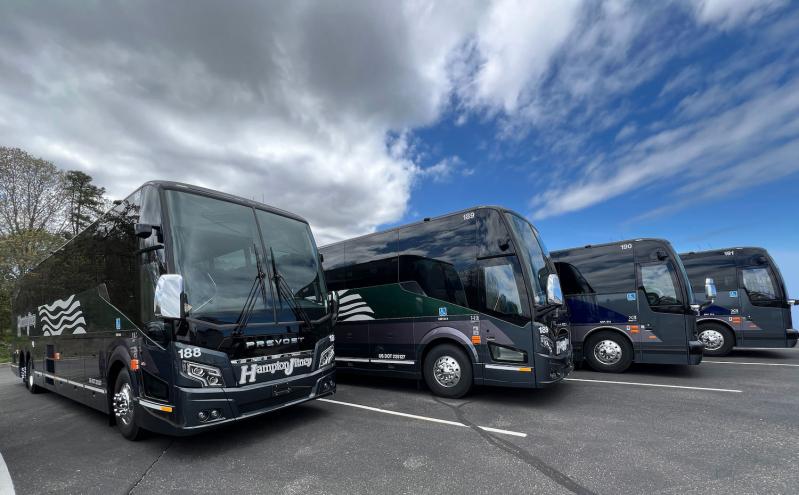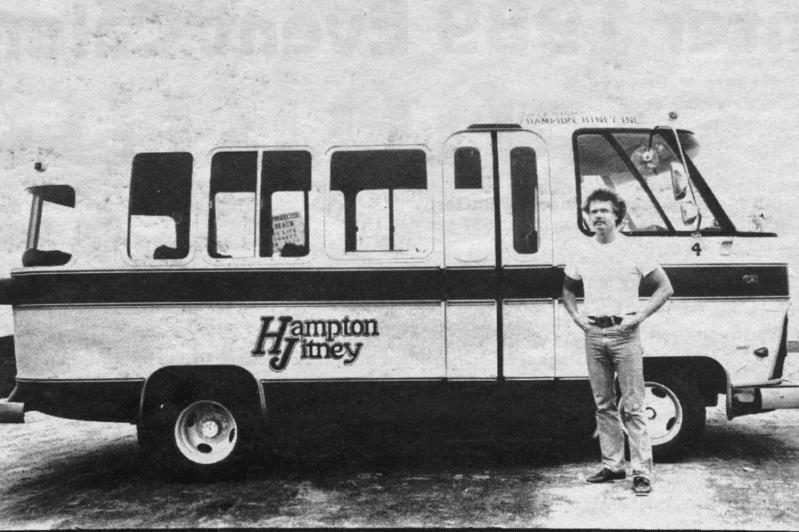The earliest iteration of the Hampton Jitney began traversing the roads of the South Fork 50 years ago, on the heels of the first oil shock, which sent gas prices soaring and had people looking for alternatives to their cars. The original service was meant to go from hamlet to hamlet between East Hampton and Southampton. “The passengers could ride to wherever it was they were going by loading their bike onto the bus for 50 cents,” said Geoffrey Lynch, the Jitney’s current president.
Jim Davidson, who started the Hampton Jitney, was a part-time East Ender, and “if truth be told,” Mr. Lynch said, “he was probably looking for a way to move to the East End permanently and make a living without going back and forth.”
“It ran in 1974 and 1975 and certainly was received well, but it was not a financial success by any means. Jim thought it would go by the wayside and he would have to go back to New York City.”

When a couple of friends and relatives asked Mr. Davidson to take their belongings back to New York City on his buses, he took an ad out in the local paper to advertise the service. “It turned out to be the business model for Hampton Jitney today,” Mr. Lynch said. “From then on, he focused on the service from the city to the East End.”
Half a century later, it’s hard to imagine the South Fork without the Hampton Jitney, especially if you’re a commuter or part-time resident.
On any given day there are dozens of people lined up at the most popular stops across the East End, especially during summers and holidays and at the end of the weekend. Every week, tens of thousands of people use the Hampton Jitney as their primary passage to and from New York City, and it now stops all across Manhattan, offers connections to New York airports, and makes drop-offs and pickups in more than a dozen towns and villages on both the North and South Forks.
Mr. Davidson was also an advertising executive in New York City, and to differentiate the Jitney from any other bus service, he added a person to serve light snacks and drinks and do things like load luggage and take payments. Mr. Lynch said Mr. Davidson had wanted the experience to have more cachet than just riding a bus.
And it seems to have worked.
Emily Wheeler of Water Mill, a frequent passenger, said the Hampton Jitney has accommodating staff and options that differentiate it from other bus services. “It’s never late to leave my stop in Manhattan, which I feel is not the case for other sorts of transportation,” Ms. Wheeler, 20, said. “Also, my favorite snack is Goldfish, and they serve it on the Hampton Jitney, plus the cute little water bottles. The bus is usually cleaner than the other buses, even the bathrooms.”
The Hampton Jitney has been a family affair since 1988, when Mr. Lynch’s parents, already involved in the ferry-boat business, purchased the company. They took what Mr. Davidson was doing and built on it.
“My brother, Andrew, our vice president, and I have taken the torch and have been expanding on what he was doing,” Mr. Lynch said. “We continued the expansion into the North Fork. The Ambassador-class service began in the year 2000 as a higher-end service. . . . It has more amenities and services like wine tastings and such.”
To celebrate making it halfway to the centennial, the Jitney created a separate website with 50th-anniversary merchandise through a partnership with the shopping website Le Catch. “Folks who have dedicated their products to us on the website, we give to our Jitney customers,” he said. “It’s called ‘50 Giveaways for our 50th anniversary.’ We will place gifts on random seats of random buses, which hopefully come as a nice surprise to our riders.”

As the Jitney looks to the next half-century, “We are trying to upgrade our fleet,” Mr. Lynch said. “We purchased more vehicles in the last year to improve the quality. We are looking at electrification of our fleet eventually. We will probably have electric Hampton Jitneys at some point. And we continue to enhance our service. We are looking at new technology to enhance the service for our customers.”

